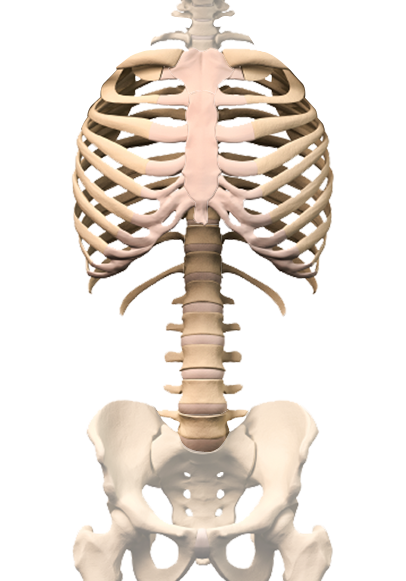Lumbar Vertebrae
STRUCTURE AND POSITION
- Lumbar Vertebrae are large vertebrae and their size increases from top to bottom.
- They are five in number and named as L1, L2, L3, L4 and L5.
- Lumbar Vertebrae have specific Superior and Inferior Articular Processes. They lie more Anteroposteriorly (in sagittal plane) to provide maximum mobility.
- Lumbar Vertebrae have small, thick, projecting Laminae and Spinous Processes which unite posteroinferiorly.
- Bodies of Lumbar Vertebrae are elliptical in shape if viewed from above.
- Lumbar Vertebrae have large pedicles on superior aspect of their Bodies.
- Lumbar Vertebrae start at the termination of Thoracic Vertebrae superiorly and end by joining Sacrum below.
ARTICULATIONS
Each Lumbar Vertebra articulates with 2 Vertebrae, one superior and one inferior to it.
- Superior Articular Facets of one Lumbar Vertebra joins with Inferior Articular Facet of the Vertebra superior to it.
- Each Lumbar Vertebra also forms joint with superjacent and subjacent Vertebrae through its Body. Bodies of the adjacent Vertebrae are stacked onto each other and held together by Intervertebral Discs. It forms Fibro Cartilaginous Joint.
FUNCTION AND SIGNIFICANCE
- Lumbar Vertebrae are strong and provide support to the Abdomen and whole body through Vertebral Column.
- Lumbar Vertebrae also provide flexibility by allowing range of movements across its joints.
- Lumbar Puncture is done at the level of lower Lumbar Vertebrae. It is a diagnostic and treatment procedure in which injection needle is introduced between vertebrae to reach Spinal Cord and thus CerebroSpinal Fluid.
- Lumbar Vertebrae are commonly involved in Disc Slip and Herniation. They are also affected by Osteoporosis (bone resorption).
Report Error



